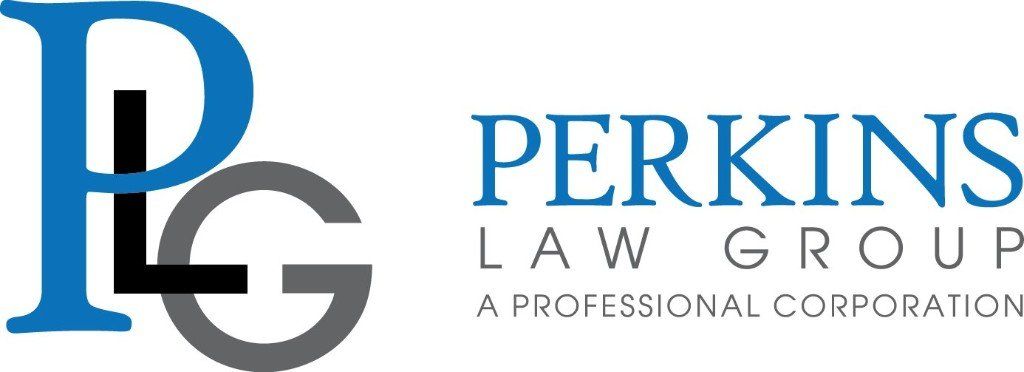Is Your Arbitration Agreement With Your Employees Enforceable?
Stephanie Perkins • January 21, 2020
AB 51: What It Is, Why People Are Fighting It, and What It Means for You
Whether you’re a business owner or an employee, you’ve likely heard of California Assembly Bill 51. This bill, approved by the governor October 10, 2019 and deemed effective on January 1, 2020, was written to address the perceived abuse of arbitration agreements in employment contracts. Specifically, AB51 was intended to combat allegations of workplace harassment and assault from being dealt with in private arbitration as opposed to being brought forward into public court proceedings. The concern is this alternative forum, which is confidential and not a matter of public record, allows employers to sweep some of the “ugliness” under the rug, regardless of the outcome.
However, several business groups, including the California Chamber of Commerce, have raised “serious questions” about this measure, both regarding its legality and its effectiveness. So, what does this bill say? And what are the issues being raised? How will they potentially impact you as a business owner or employee?
The Language of The Bill
AB 51 states that “This bill would prohibit a person from requiring any applicant for employment or any employee to waive any right, forum, or procedure for a violation of any provision of the California Fair Employment and Housing Act (FEHA) or other specific statutes governing employment as a condition of employment, continued employment, or the receipt of any employment-related benefit.”
This bill seeks to ensure that every employee has the full benefit of the rights and procedures established by FEHA and the Labor Code and that no retaliation will be taken against someone for refusing to consent to waiving said rights. AB 51 wants to ensure that employers can no longer unilaterally impose pre-dispute arbitration agreements on employees, and that employees entering into such agreements do so voluntarily. If an employer violates this law, it will now be deemed a misdemeanor, and they could be subject to criminal sanctions.
The bill doesn’t seem to cover any arbitration agreements for claims under statutes other than the FEHA and the Labor Code and excludes mention of Financial Industry Regulatory Authority arbitration agreements.
What Are the Problems?
According to the U.S. Chamber of Commerce, the California Chamber of Commerce, the National Retail Federation and other groups, AB 51 violates federal law. The specific law in question is the Federal Arbitration Act, which states that “written, pre-dispute arbitration agreements in transactions involving commerce, which require arbitration of controversies between the parties, is valid, irrevocable, and enforceable.”
The FAA also says that a state cannot pass or enforce laws that interfere with, limit, or discriminate against arbitration. Though the FAA does not cover every type of worker, and specifically excludes “any class of workers engaged in foreign or interstate commerce,” the FAA is still a strong sticking point for opponents of the bill. In fact, a very similar version of this bill was struck down by then-Governor Jerry Brown in 2018, expressly because he believed it violated the FAA.
Business organizations believe that AB 51 would cause significant costs to employers
due to litigation and the expense of delayed dispute resolutions. They argue that arbitration is efficient, fair, and affordable. They have expressed concerns regarding employers being exposed to criminal liability because of arbitration agreements and are concerned about the potential complete elimination of settlement agreements.
However, labor advocates say that arbitration agreements can present difficulties to employees, who may have trouble finding a lawyer to represent them. They argue that mandatory arbitration agreements are too often used to silence valid claims of workplace harassment and employee discrimination.
Currently, over half of California’s employers have mandatory arbitration procedures, and nearly 30% include class-action waivers in those procedures, denying employees the right to address rights issues through collective legal action. Mandatory arbitration agreements also disproportionately impact low-wage workplaces and jobs and industries with a high concentration of black and female employees.
What Does This Mean for You?
Currently, AB 51 is on hold. U.S. District Judge Kimberly Mueller put a temporary restraining order in place halting the enforcement of the bill and will be deciding whether the business groups’ motion for a preliminary injunction is valid. If the injunction is granted, the bill’s implementation could be delayed indefinitely.
Contact Us
However, any arbitration agreements entered into before January 1st, 2020 are still valid, and the law does not prevent employers from offering arbitration as a method of settling disputes. Currently, there is no change to how business owners can use and require arbitration agreements as a condition of employment.
However, it is strongly recommended that employers keep a close eye on the proceedings of AB 51 as they unfold. You should also consult with your counsel on your options, including whether you want to change the language of your arbitration agreement, should you have one. Some language changes could include stating that your agreement is solely governed by the FAA or excluding charges that employees may file with the Equal Employment Opportunity Commission (EEOC), the California Labor Commissioner, the Department of Labor (DOL), the Department of Fair Employment and Housing (DFEH) or the National Labor Relations Board (NLRB).
For advice on what you should do with regard to this bill, contact us
to set up an appointment. We can work with you to ensure that whether the bill is challenged or enforced, you will be in compliance with all state and federal employment laws.
This article is legal information and should not be seen as legal advice. You should consult with an attorney before you rely on this information. This article does not create an attorney-client relationship.

As you may know, the Families First Coronavirus Response Act (the “Act”) was passed in order to provide relief to employees that may be affected by COVID-19. Although previously set to go into effect on April 2, 2020, the Act now goes into effect on April 1, 2020, and will remain in effect until December 31, 2020, pending any further amendments or extensions. The Act is an extension of the Family Medical Leave Act (“FMLA”) and applies to all businesses with fewer than 500 employees. While the Department of Labor (“DOL”) has advised that businesses with fewer than 50 employees may qualify for an exemption from the Act’s requirements if compliance would jeopardize the viability of the business as a going concern, the DOL has not issued any direction on how small businesses might apply for the exemption. For now, the DOL has stated that any employers who wish to seek an exemption should document why their business meets the criteria and maintain such documentation – the DOL has requested that documentation not be sent to the DOL. The DOL is requiring that all covered employers, including those that may qualify for the exemption, provide a copy of the notice prepared by the DOL relating to the Act, to their employees. If workers are telecommuting, the notice can be emailed or directly mailed to employees or posted on an internal or external website for employees. The official notice can be downloaded from the DOL’s website. We have provided the link relating to notices relating to non-federal employees: https://www.dol.gov/sites/dolgov/files/WHD/posters/FFCRA_Poster_WH1422_Non-Federal.pdf While we are still waiting on clarifying guidance from DOL, here are some things we know the Act covers: Decrease in Unpaid Days: The current FMLA has a 14-day unpaid leave day minimum; the new Act decreases these unpaid days to 10. An employee is also allowed to substitute any accrued leave time, including personal and vacation time, to cover those 10 days. Revised Reasons for Paid Sick Leave: Full-time employees which fall under one of the following categories are eligible for up to 80 hours of paid sick leave: The employee is subject to a mandated quarantine; The employee has been advised to self-quarantine by a health care provider due to COVID-19 concerns; The employee has been experiencing COVID-19 symptoms and is seeking a medical diagnosis; The employee is caring for someone who is subject to a mandated quarantine or has been advised to self-quarantine; The employee is caring for a child whose school or childcare provider is closed due to COVID-19; or The employee is exhibiting symptoms of a substantially similar condition to COVID-19 as determined by the Secretary of Health and Human Services. It is important to note that employers cannot require employees to use other paid leave before qualifying for paid sick time. Nor can an employer require an employee to find a replacement for their hours. However, an employer can require the employee to follow reasonable notice procedures to ensure they continue receiving the benefit after the first workday they receive sick leave under the Act. Paid Leave Under the Act: The Act requires private employers to provide employees with 2 weeks of paid sick leave paid at the following rates: The employee’s regular rate up to a maximum of $511 per day if the employee cannot work because the employee is quarantined, and/or experiencing COVID-19 symptoms and seeking a medical diagnosis, and 2/3 of the employee’s regular rate of pay, capped at a maximum of $200 per day because the employee is unable to work because they are caring for an individual subject to quarantine, or due to caring for a child whose school or child care provider is closed due to COVID-19, and/or the employee is experiencing a substantially similar condition as specified by the Secretary of Health and Human Services, in consultation with the Secretaries of the Treasury and Labor. Under the Act, full-time employees are entitled to 2 weeks of paid leave (80 hours) and part-time employees are entitled to the average number of hours worked over a two-week period. Job Protection: Employees who have been employed for at least 30 days are entitled to up to 12 weeks of job protected leave for those employees that cannot work due to caring for a child whose school or childcare provider is closed due to COVID-19. The same reinstatement provisions apply as under the FMLA. However, some exceptions apply to employers with less than 25 employees if certain conditions are met: The job no longer exists because of economic circumstances or other conditions that affect employment caused by the public health emergency, the employer makes reasonable efforts to place the employee in an equivalent position with equivalent pay and benefits, and if these efforts fail, the employer makes reasonable efforts to contact the employee about equivalent positions for 1 year following the COVID-19 emergency or at the conclusion of the 12 week leave period, whichever is earlier.

Whether you’re a manager at a small business or the CEO of a large firm, chances are you’ve either shifted to working remotely or are making the preparations to do so in the wake of the World Health Organization’s announcement that the coronavirus is officially a pandemic. It’s likely that this is the first time you’re having to consider implementing work-from-home regulations on a large scale, and it’s equally likely that this will be the first time many of your employees will be working remotely. So what does this transition mean for you? It means that both you and your employees are going to need to make a swift adjustment to remote work. It also means that how you make the adjustment is key. To help your employees stay on task and delivering results, here are some tips for switching to working from home.

As of July 5, 2019, Perkins Law Group (“PLG”) is approved to teach the California Board of Accountancy Regulatory Review Training. All California licensees are required to take this training. This innovative course includes a review of the California Accountancy Act and California Board of Accountancy Regulations. We’ll discuss how these regulations govern the practice of public accountancy in California and review both recent and historic disciplinary actions taken by the California Board of Accountancy (the “Board”). This ensures licensees understand all regulations and the reasons they may be disciplined by the Board. Besides the California Board of Accountancy Regulatory Review Training, PLG is pleased to announce a second course offered in combination: Ethics and Decision-Making in Today’s Accountancy Practice. This engaging, dynamic course is led by our knowledgeable team and covers various ethical theories and their practical applications. Using case studies and real-world examples, CPAs will study contemporary accounting and business ethics, including suggested methods for approaching ethical dilemmas. We’ll also discuss AICPA ethical pronouncements and rulings and PCAOB guidance.





